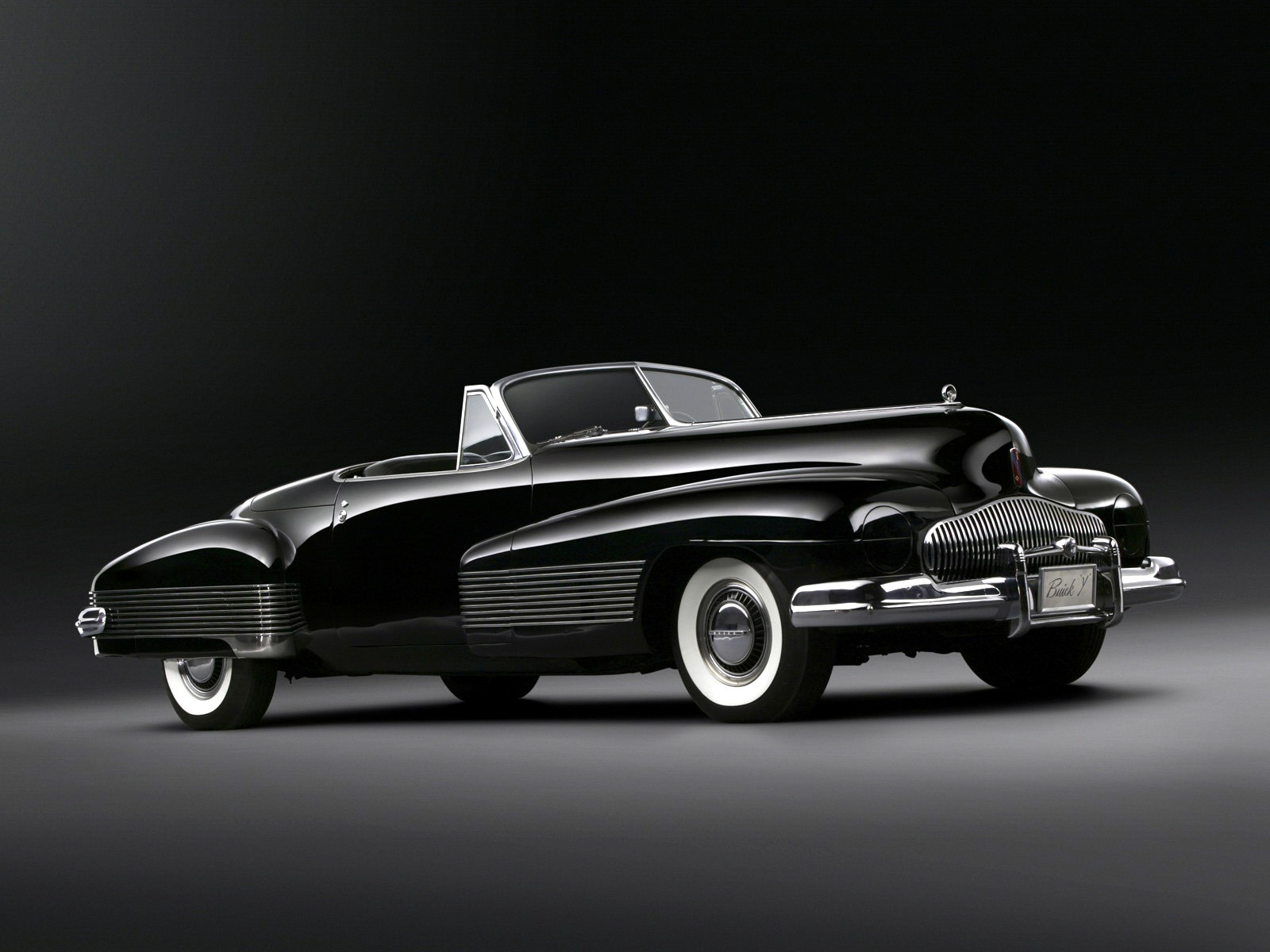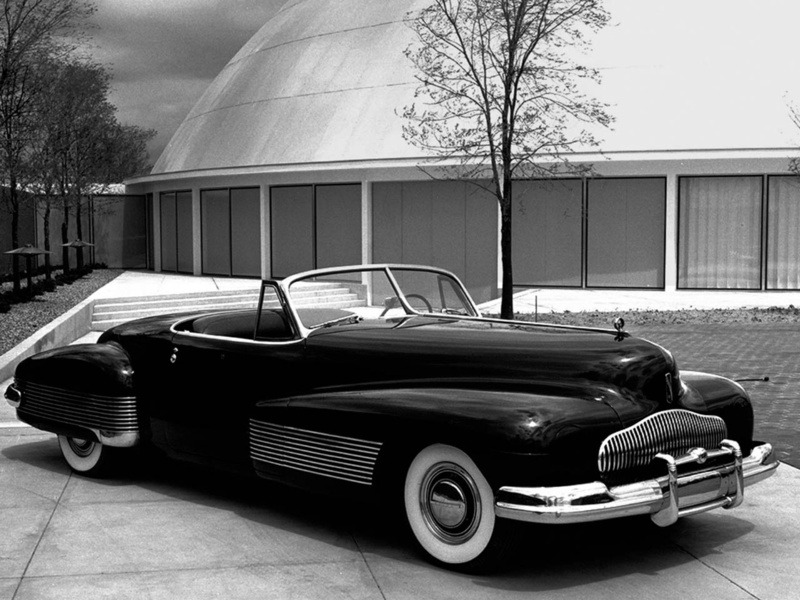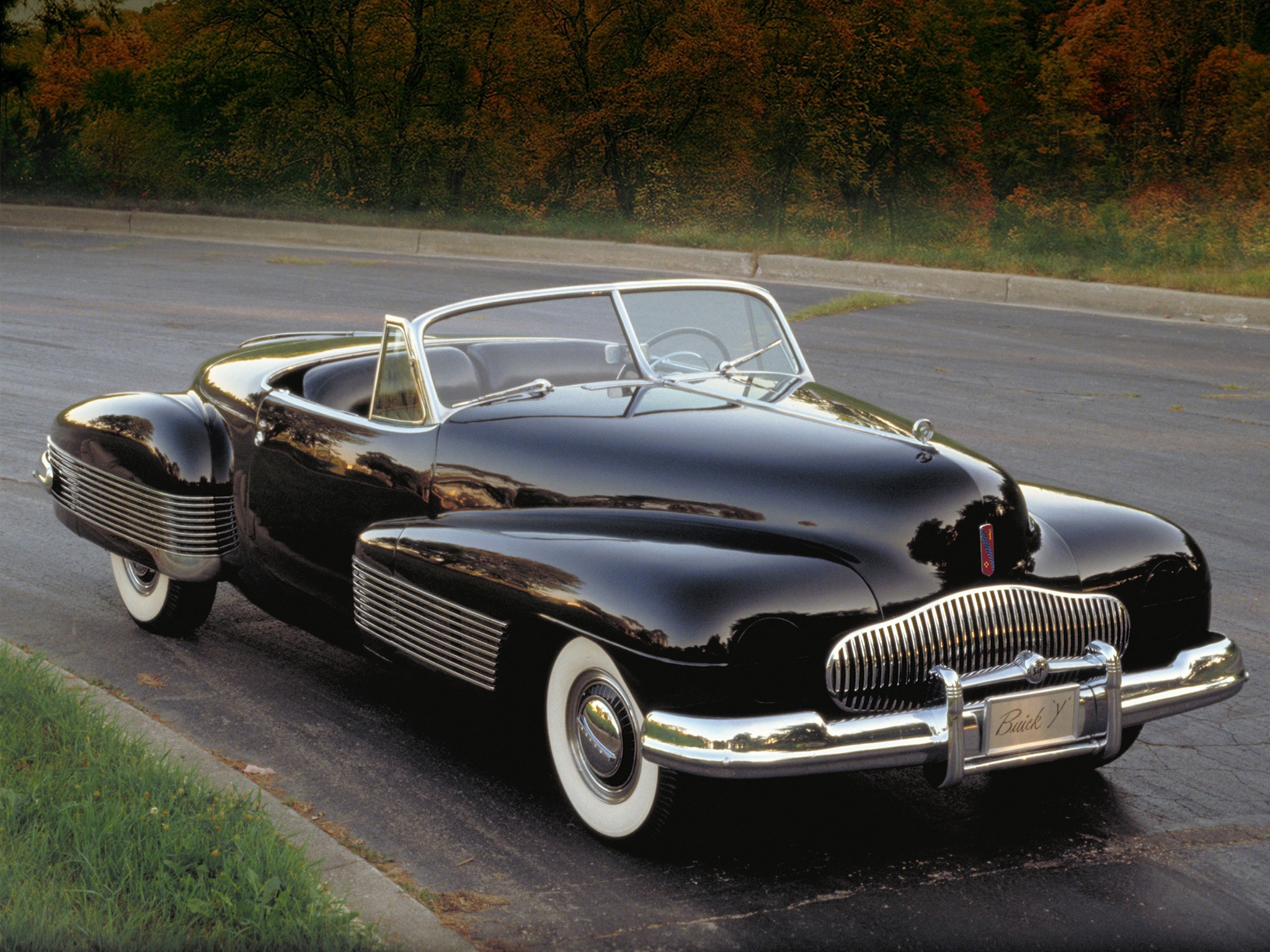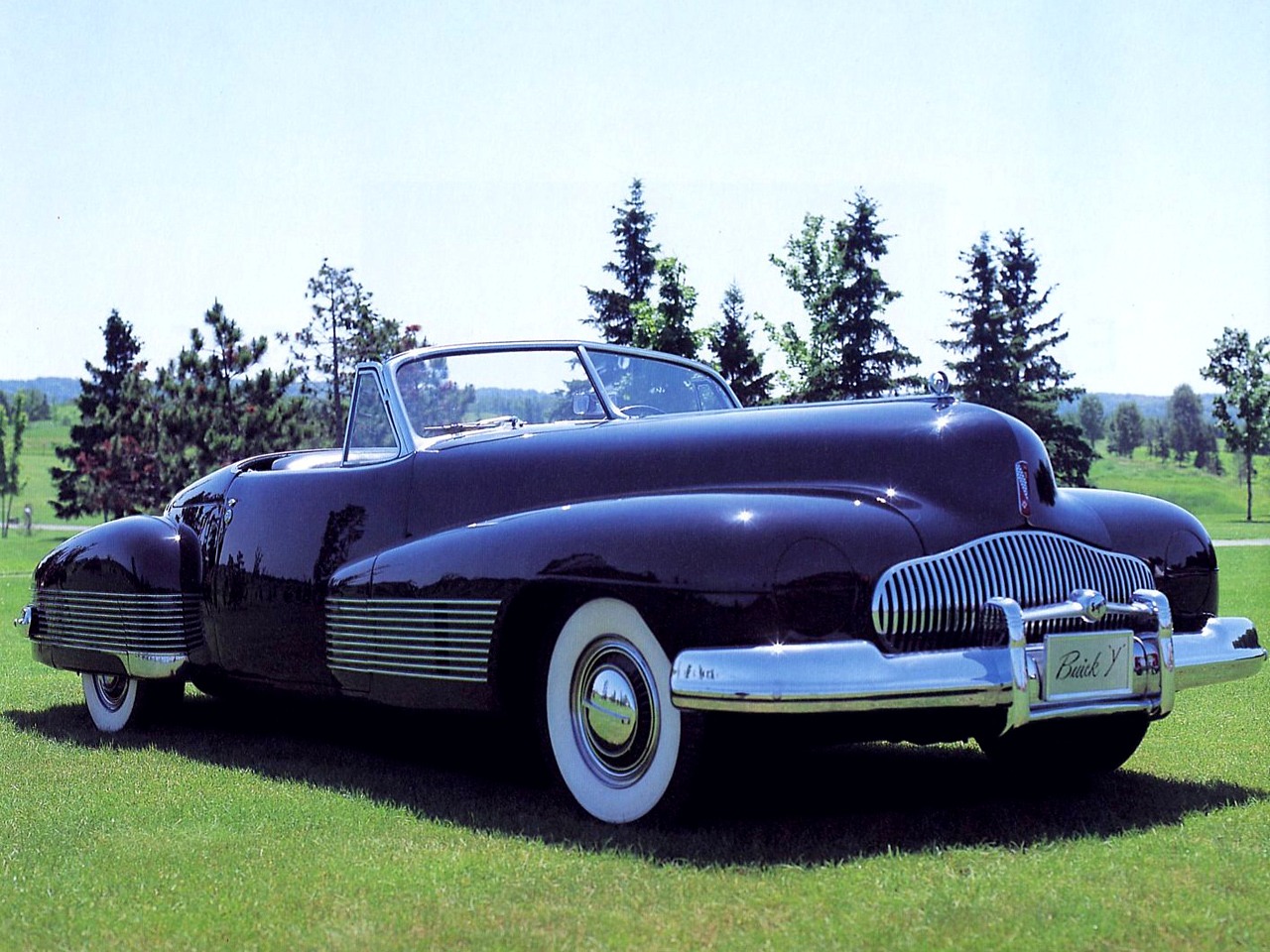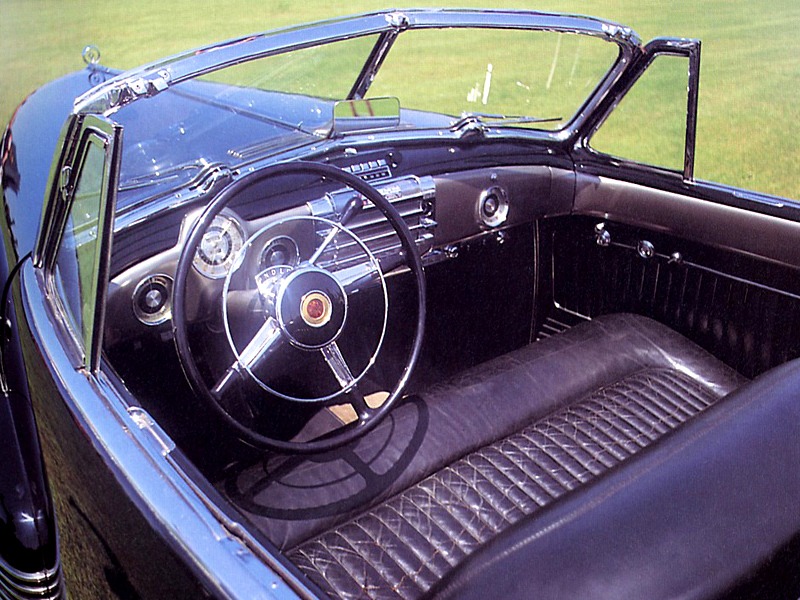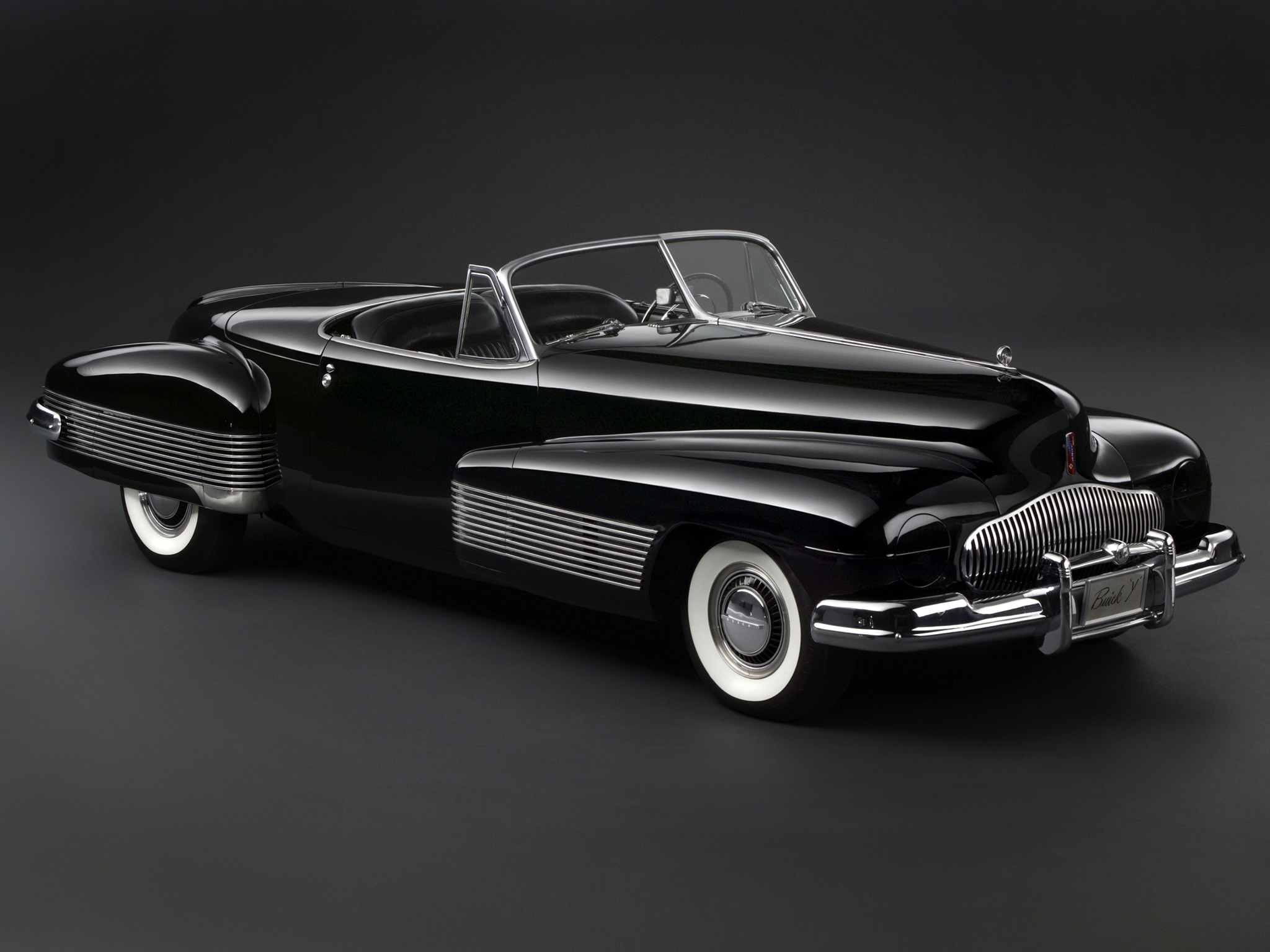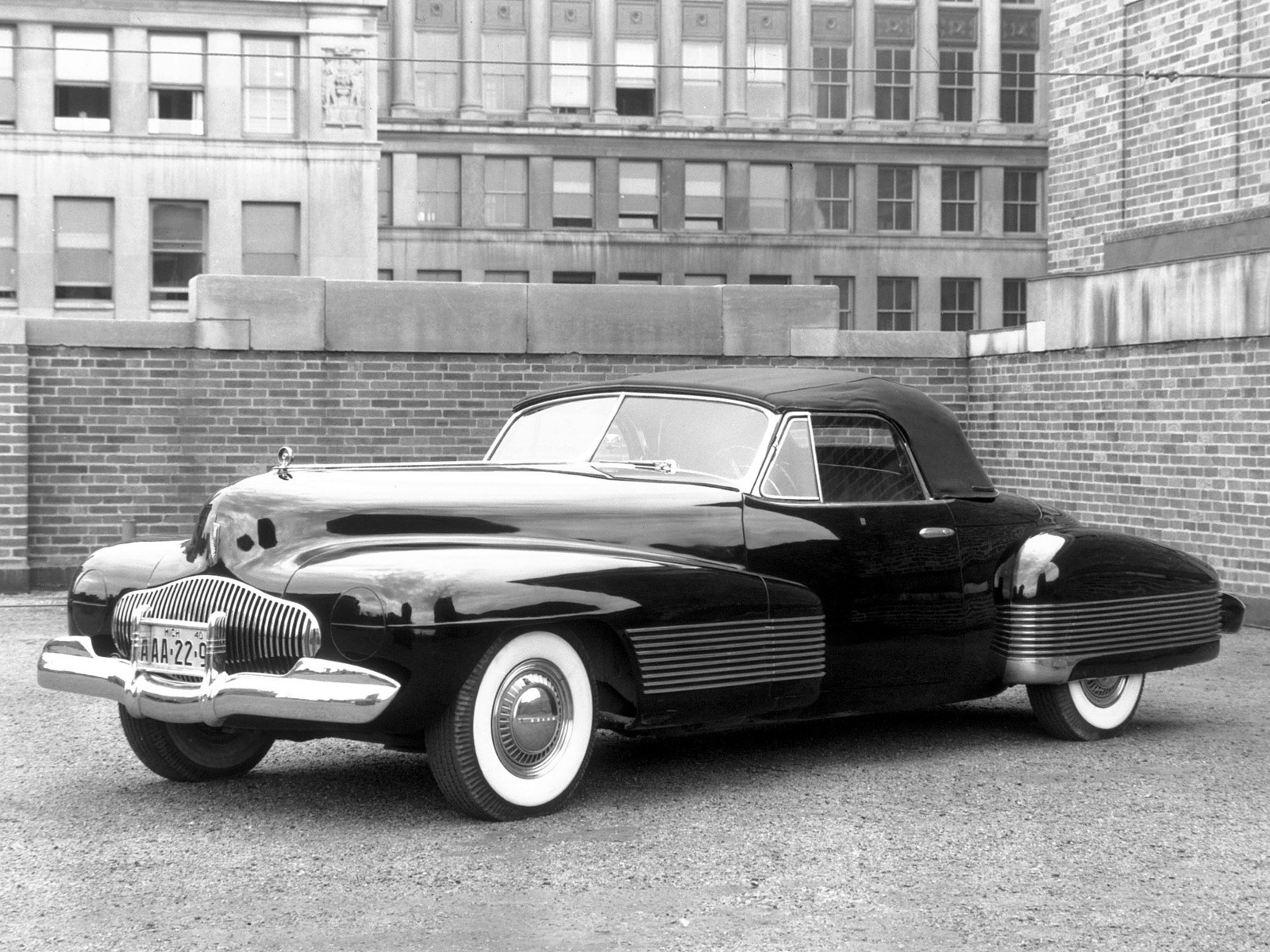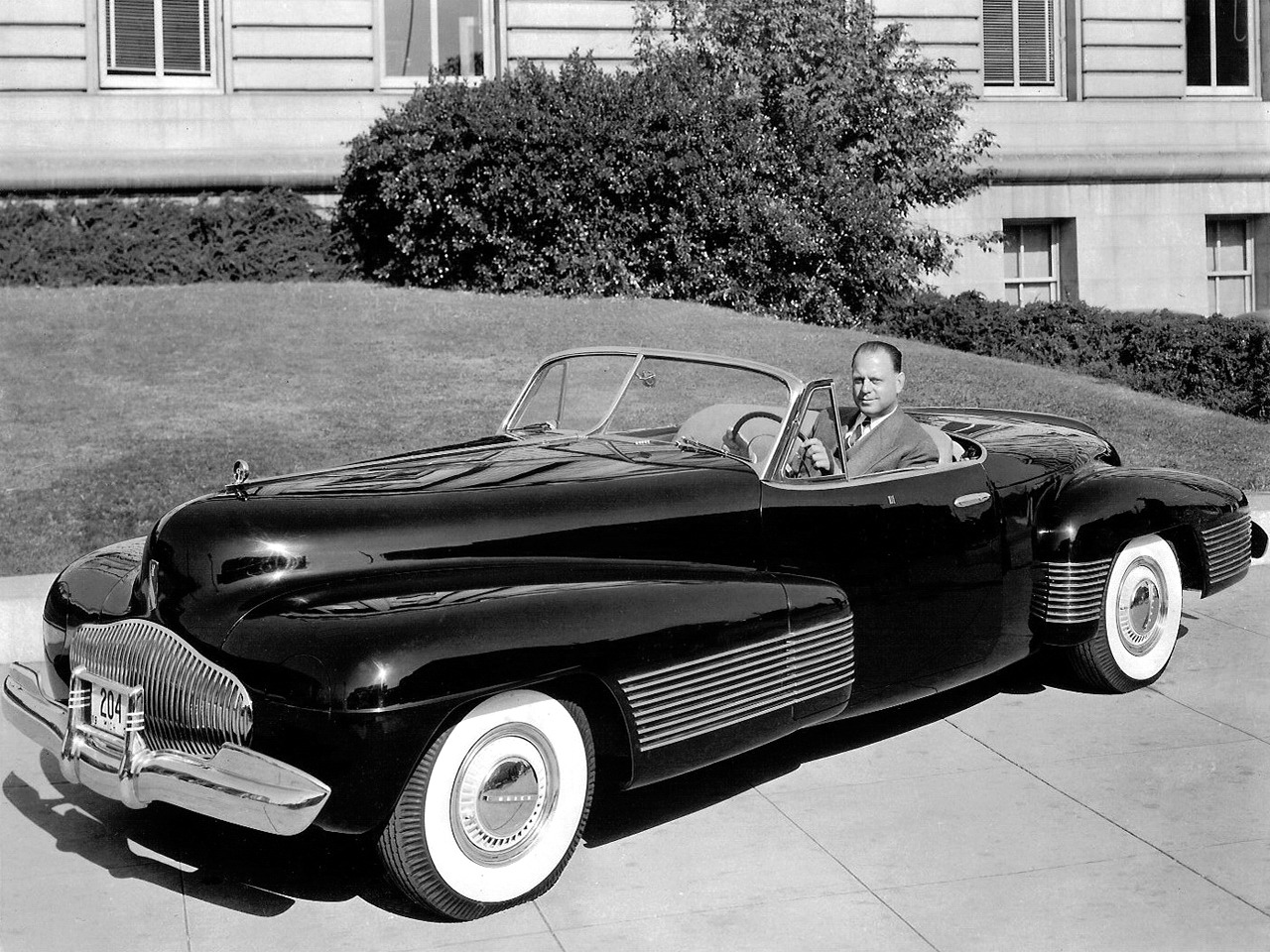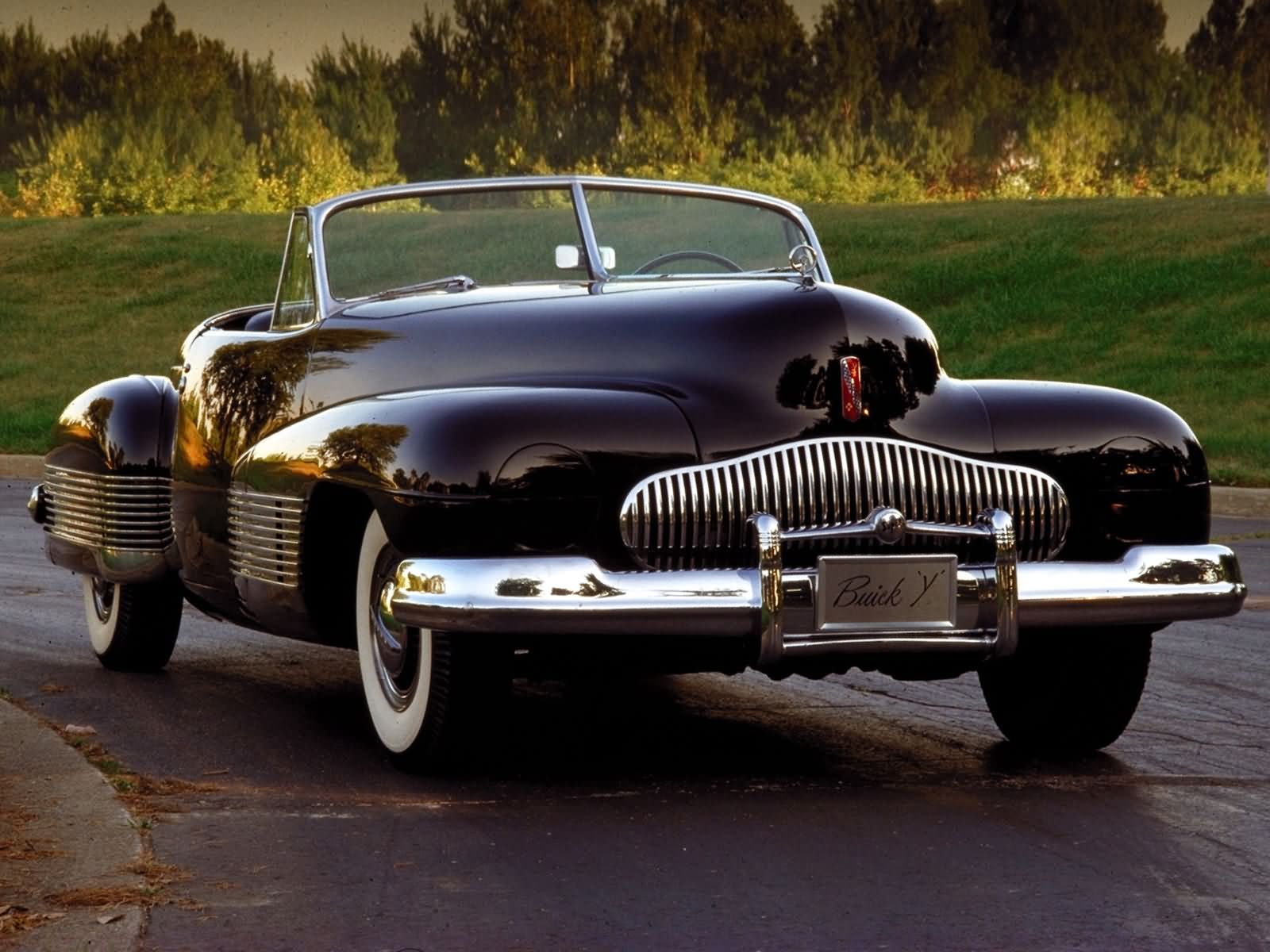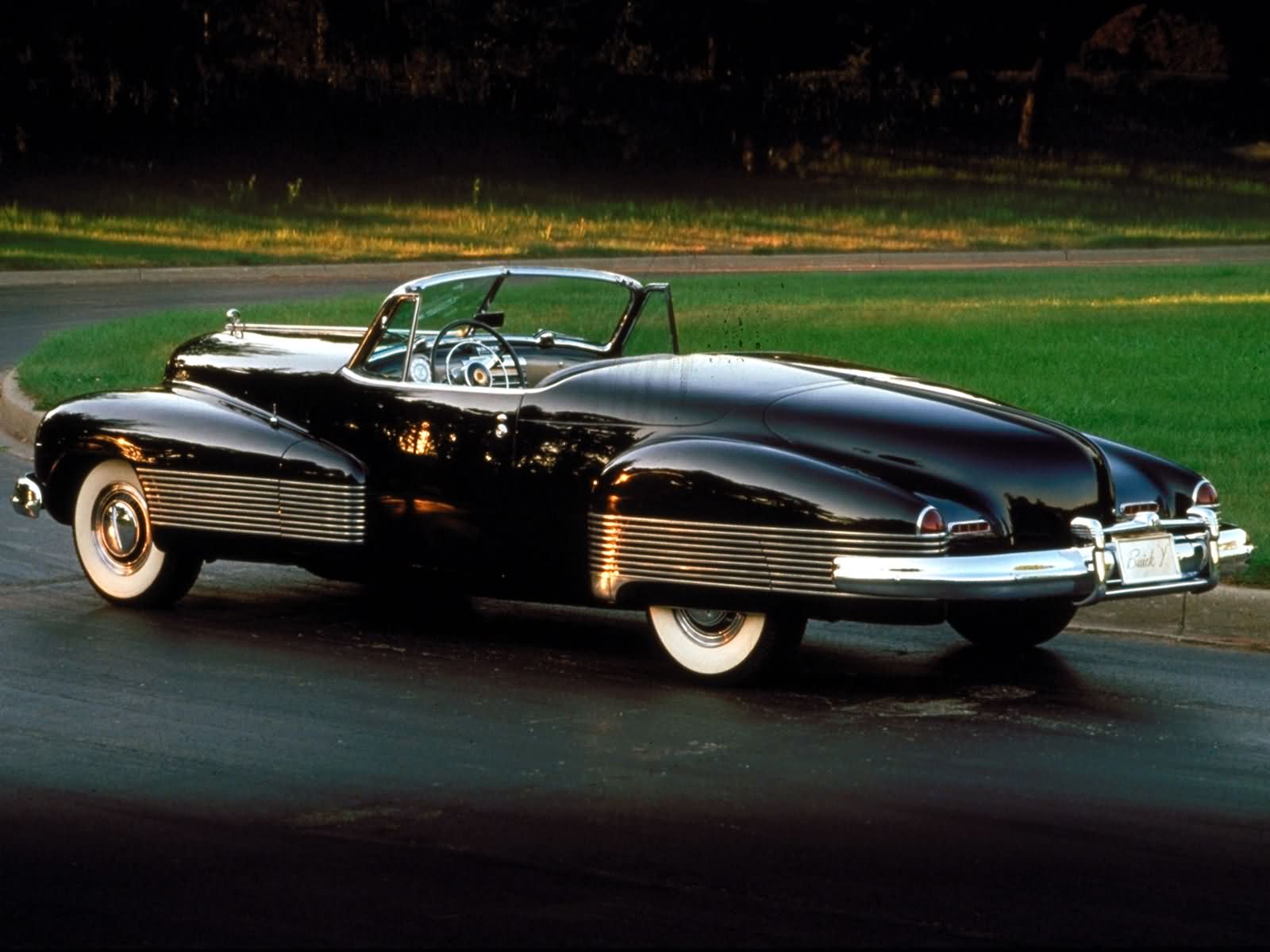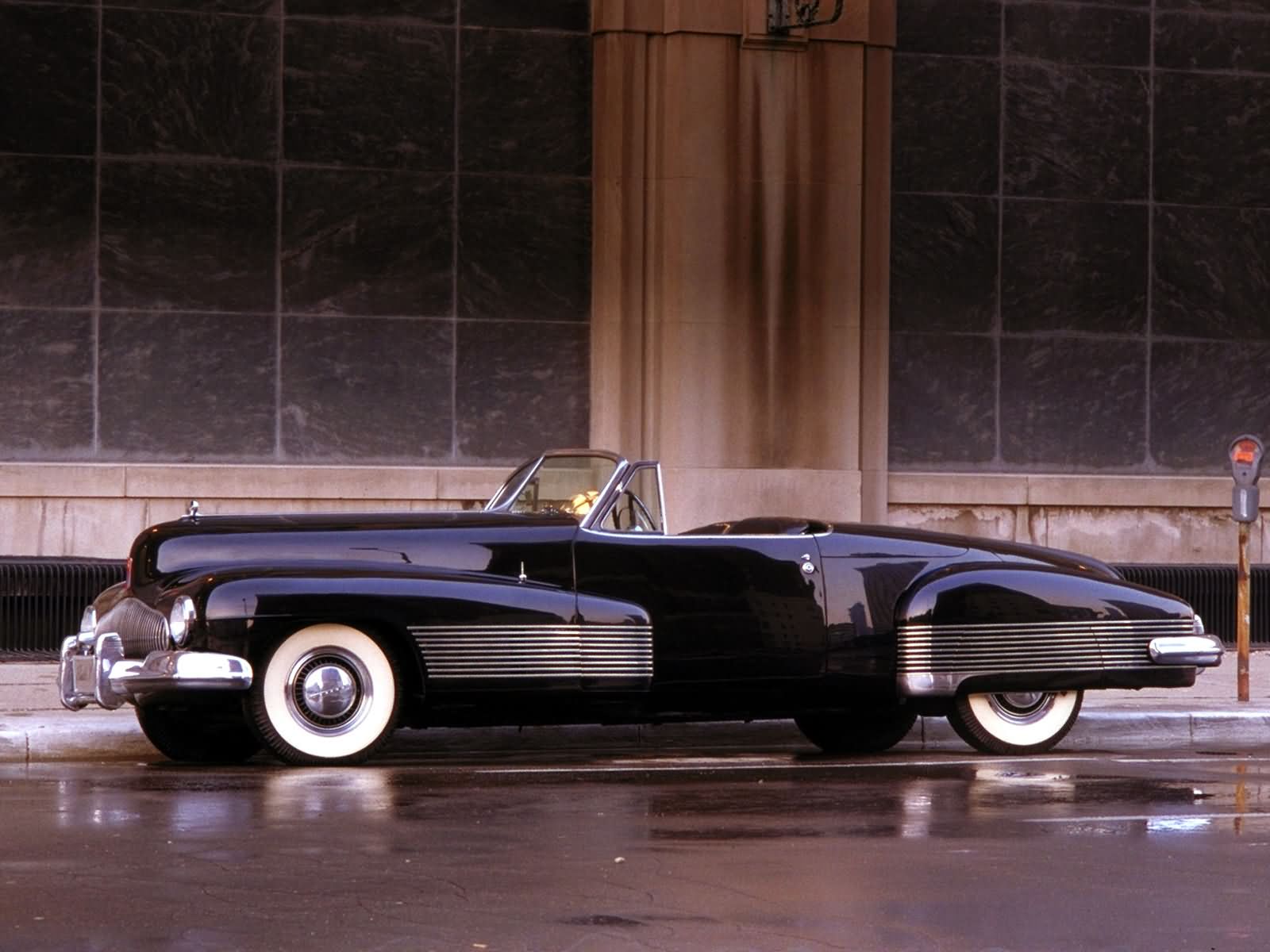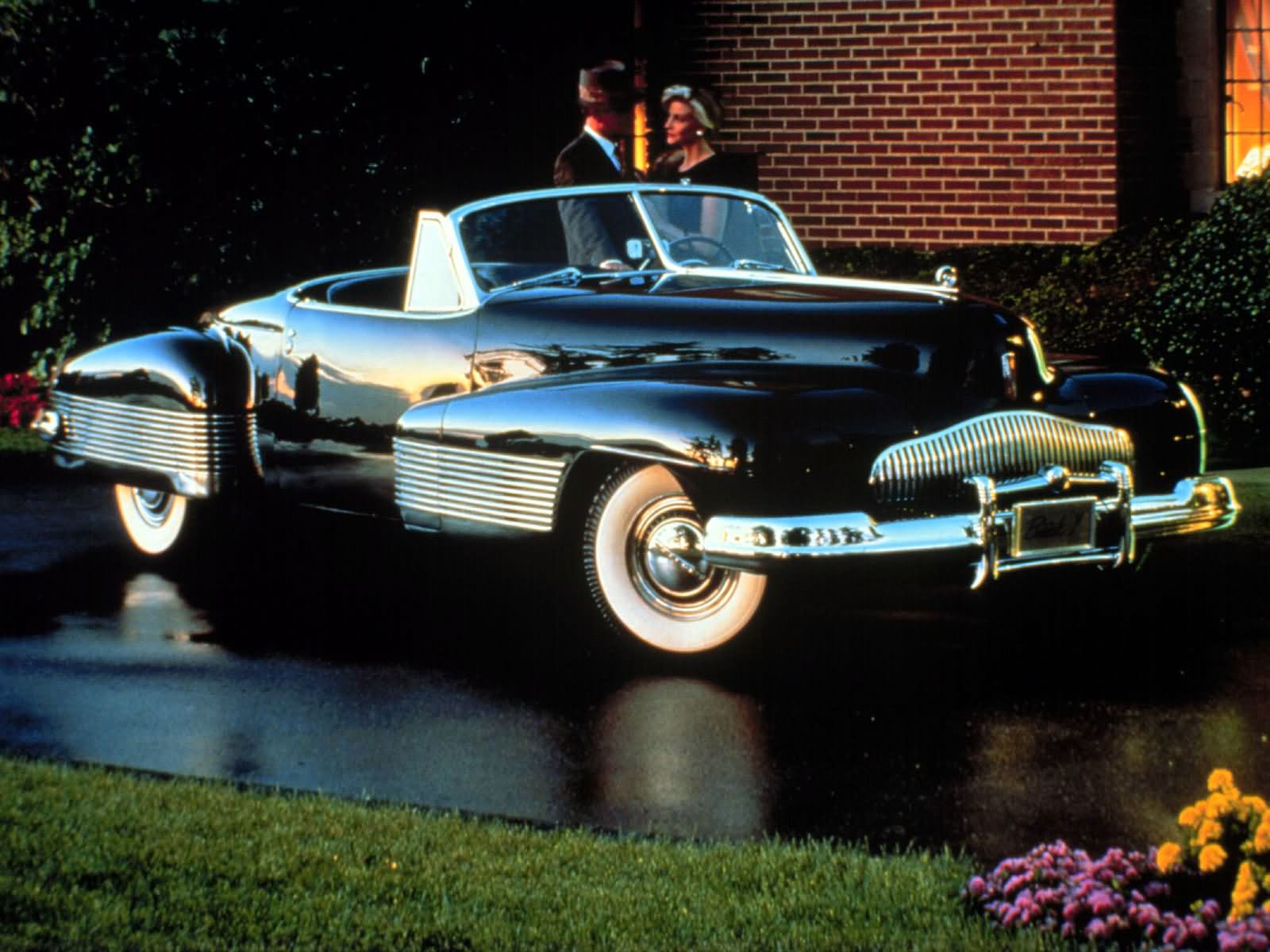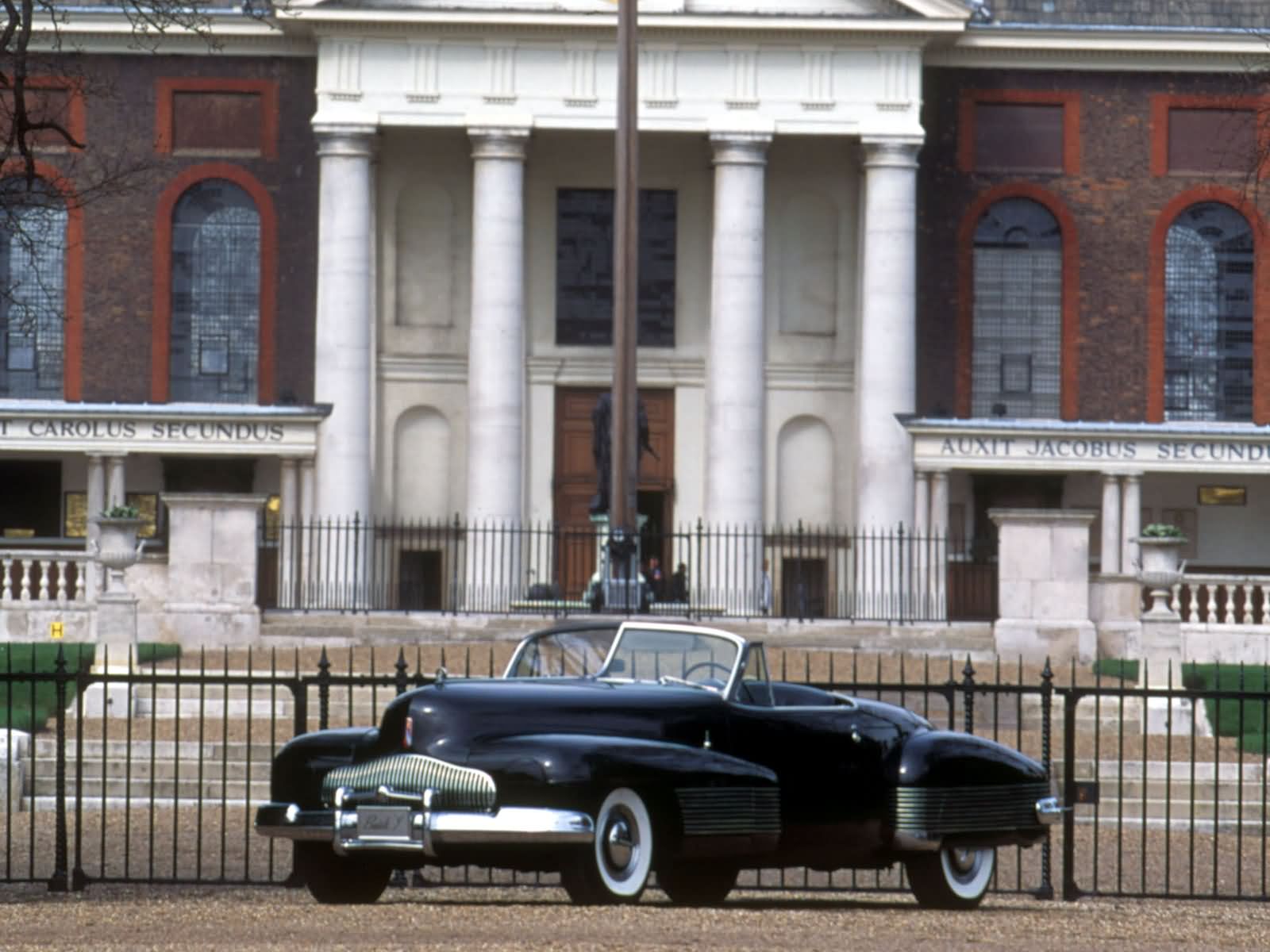Universally regarded as the first of the concept cars, the Y-Job marked a recognition by the mighty General Motors corporation of the increasing importance of styling in the evolution of its stable of makes.
A 1937 Buick chassis was prepared and extended to nearly 6096mm (20ft) in length by the division’s chief engineer, Charles Chayne, and his team. Art and Colour’s Harley Earl then proceeded to fit it with a two-seater roadster body that bristled with new concepts and initiatives.
The Y’s long, low look was accentuated by the use of longitudinal mouldings on the front and rear wings and, in the former case, the wing line was extended for the first time into the front door panels. Yet more daringly the grille featured vertical, rather than the customary horizontal, bars.
The front end of the car pointed the way forward as the wings, although still identifiable, were beginning to merge with the bonnet line. A further Earl initiative, that gave the nose and its immediate surround a smooth, sculptured quality, was the use of concealed headlamps in the manner of the Cord 810 of 1935.
The bonnet was surmounted by what the press release accompanying the car’s launch described as a ‘machine-gun sight’ mascot that was fitted in refined form to all Buicks produced between 1946 and 1958.
Further innovations were the use of flush-fitting door handles, a convertible top that disappeared beneath a metal deck and electrically operated windows. There were no running boards, but these had been also absent from the in-house Cadillac’s Series 60 Special of 1938.
The Car of the Future
The Y-Job, completed late in 1939, was unveiled by GM in the spring of 1940 when it was promptly hailed as the ‘Car of the Future’. But America’s involvement, from December 1941, in the Second World War meant that the car was set aside, although the distinctive radiator grille found its way on to the few 1942-model-year Buicks produced before the attack on Pearl Harbor.
Harley Earl used the Y-Job as his personal transport throughout the war. It subsequently underwent modest modifications, one of which involved concealing the rear wheels beneath spats which extended the mouldings along the length of the wing.
The car certainly anticipated the shape of post-war cars with their emphasis on horizontals, and the 1950’s crop of what were then collectively known as dream cars.
Fortunately General Motors retained this historic vehicle, and in the the 1970s presented it to the Henry Ford Museum at Dearborn, Michigan. There the Y-Job keeps company with the LeSabre roadster, its 1951 successor.
Wood, Jonathan (1997) Concept Cars, Paragon, ISBN 0-75252-084-9.

